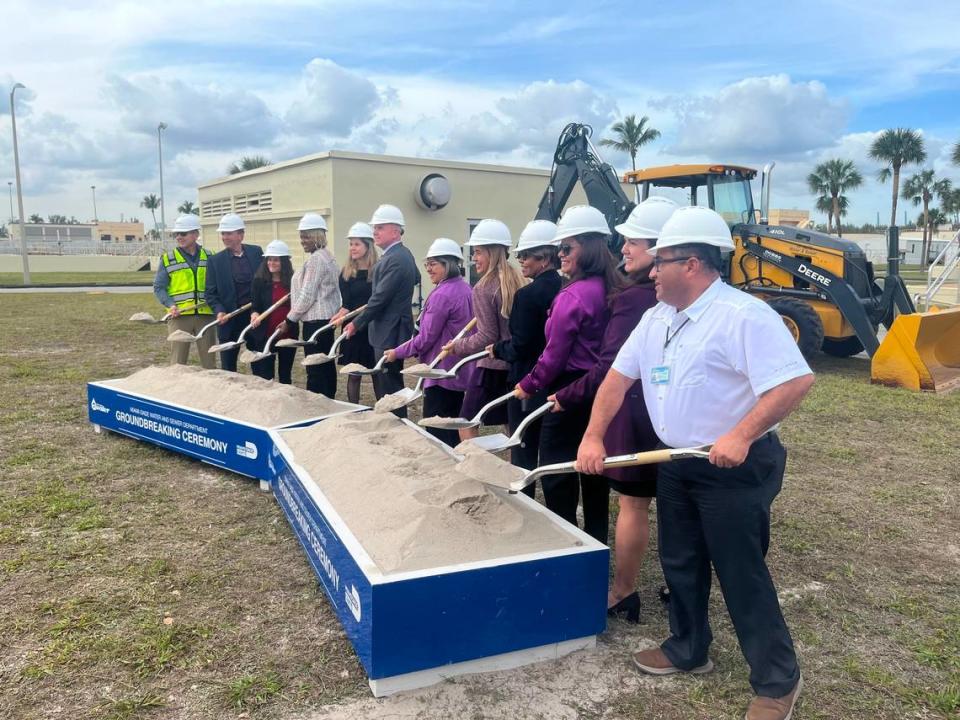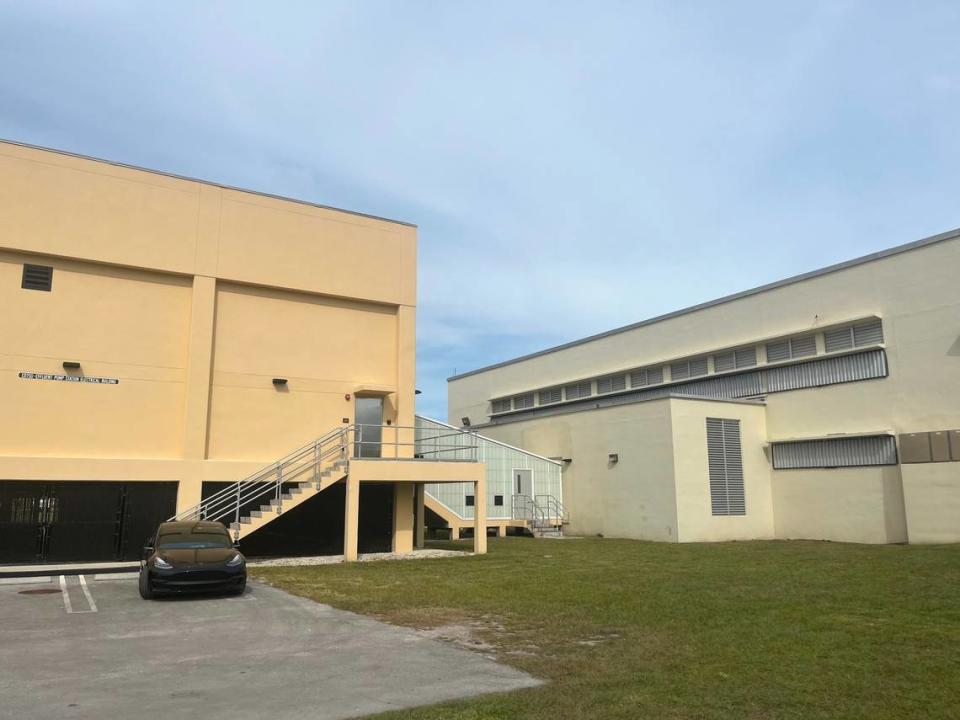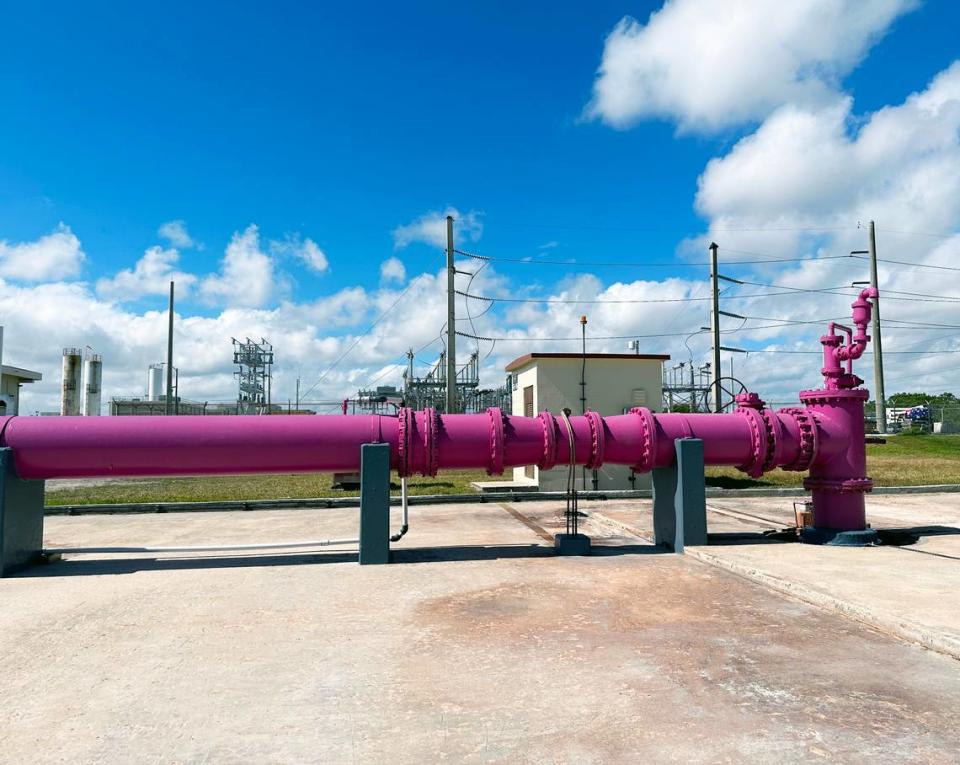Miami-Dade pipes wastewater into the ocean. This overhaul will reduce the foul flow
Miami-Dade’s biggest — and most vulnerable — sewage treatment plant is getting a big upgrade, which could help the county stop piping tens of millions of gallons of wastewater into the ocean in the next few years.
On Thursday, county leaders praised the project as a step toward a “future-proofed county.”
“We are making bold achievements to ensure we have a resilient future — we will and we must,” said Mayor Daniella Levine Cava.
The wastewater treatment plant on Virginia Key has long been a poster child for the havoc sea level rise could wreak on Miami-Dade County’s basic functions. It’s low-lying and at risk from even a few feet of storm surge.
The $216 million upgrade includes building new components of the plant stronger and higher to better protect them from sea rise. It also features top-of-the-line diesel generators to keep the plant running after a storm and extra capacity to better handle the extra wastewater flowing its way as the county works to switch residents from polluting septic tanks to county sewer.
And perhaps most importantly, the upgrades could also help Miami-Dade get closer to meeting a state requirement by 2025 to stop dumping most of its wastewater into the Atlantic Ocean.

Ocean outfall
In 2008, Florida passed a law requiring all counties to almost completely stop piping partially treated sewage water into the ocean by 2025, as well as reduce nutrient-dense discharges that pollute the water and reuse at least 60 percent of its wastewater by 2025.
Roy Coley, director of the county’s water and sewer department, said Miami-Dade still gets rid of about half of its treated wastewater into the ocean — about 150 million gallons every day — via a pipe that stretches several miles offshore.
Of course, he said, that’s not the same as directly flushing your toilet into Biscayne Bay. The water is treated to remove solids and bacteria, and it’s “as clear as the water from your tap.” But it still has more nutrients like nitrogen and phosphorus than scientists say is good for the ecosystem around it.
Right now, the other half of the county’s wastewater is shot deep underground via injection wells. The new project includes additional injection wells at the Virginia Key plant, but the county’s main plan to stop spewing sewage into the ocean also helps it meet another state goal — water reuse.

Miami-Dade produces about 300 million gallons of sewage water a day. About 15 million gallons a day get re-used for things like cooling off the heated equipment used at wastewater plants like this one to purify and treat the sewage.
The county plans to expand that figure dramatically, to about 100 million gallons a day, by using treated wastewater to cool machinery at three of its wastewater plants. After the water cools off the equipment, it gets pushed deep down below the ground via injection wells.
Using treated wastewater for these projects is a replacement for what they currently use — clean drinking water from the aquifer.
“We should not be doing that. We should be conserving our tap water,” said Raquel Regalado, commissioner for District 7.
READ MORE: What does sewage plant expansion mean for South Miami-Dade? A lot more homes, people
The south district plant’s reuse project broke ground a year ago, and after Thursday’s groundbreaking, that only leaves the county’s north district plant to go.
This, combined with an under-construction project at Florida Power and Light’s Turkey Point nuclear plant, would push the county past the minimum re-use standards set by the state.

“It’s cost-effective, it’s sustainable and it complies with the state’s ocean outfall legislation,” said Levine Cava.
The Virginia Key re-use project is slated to be completed by 2028, and the third one at the north district plan hasn’t even started. Overall, Coley said, the county is about 30% of the way to meeting all of the goals the state requires by next year.
“We have to accelerate nonstop to make this goal of 2025,” Coley said. “We have to do more work in two years than we’ve done in a decade.”
The good news, he said, is that the county has already met the state requirements for at least one of its goals, nutrient reduction.
“We are 100% in compliance for removing phosphorus from the water, which is the most detrimental to the bay,” he said.

